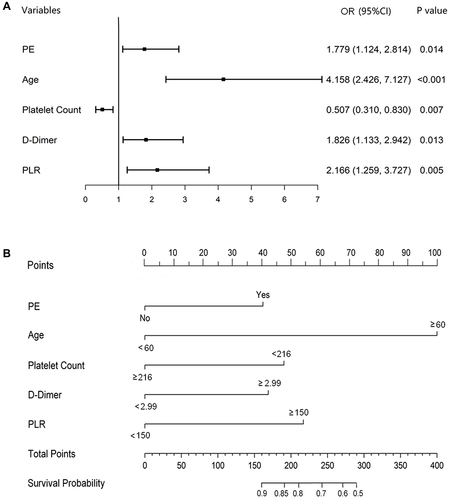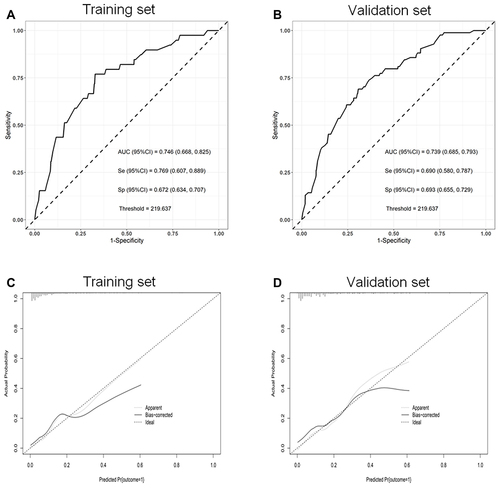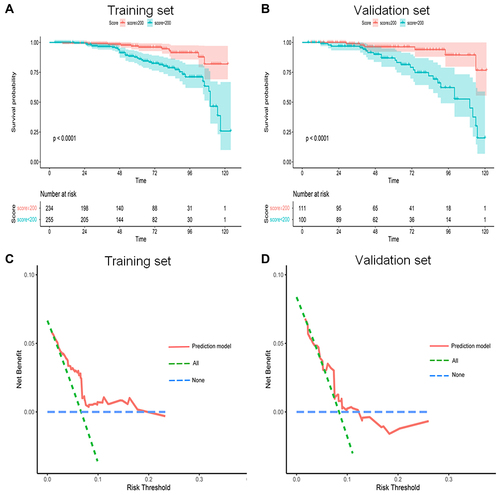Figures & data
Table 1 Clinical Baseline Characteristics in Training Set and Validation Set
Table 2 Clinical Baseline Characteristics and Univariate Analyses Between Survivor and Death in Training Set
Figure 1 (A) A forest plot of independent risk variables with OR for all-cause mortality in patients with acute VTE. (B) The nomogram of the prediction model for mortality risk.

Figure 2 (A) The ROC curve of the prediction model in training set. (B) The ROC curve of the prediction model in validation set. (C) The calibration plot in training set. (D) The calibration plot in validation set.

Figure 3 Kaplan-meier analysis of survival probability based on the median value of the total point in the nomogram showed a significant difference between the ≥200 and <200 groups (Log rank p<0.001) in training set (A) and validation set (B). The DCA showed a better net benefit of the prediction model for mortality risk within threshold probability ranged from 0% to 19% in training set (C), and 0% to 13% in validation set (D).

